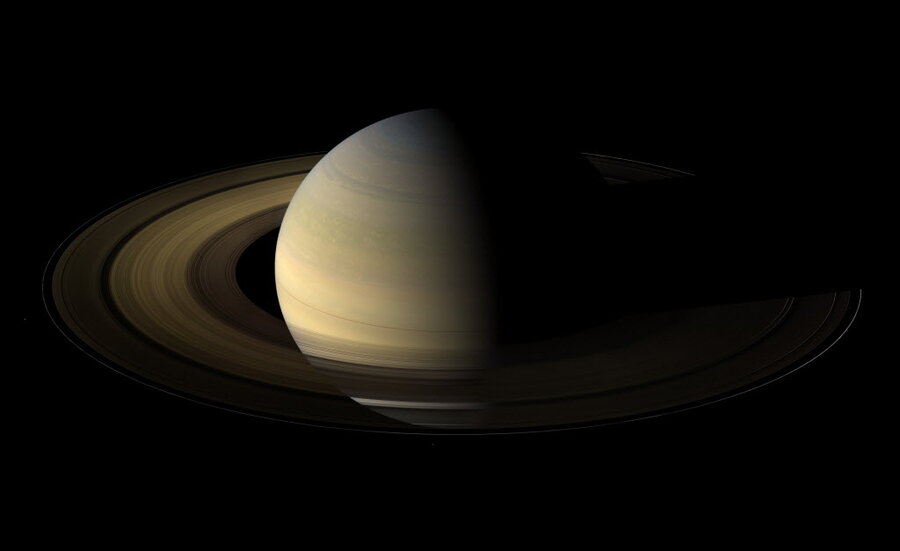Cassini spacecraft to take our global photo next month
Come together, now − it’s almost time for our global portrait.
The spacecraft Cassini’s cameras will be turned toward Earth next month, snapping a shot of our home as it is seen from Saturn, through that planet's rings.
This is the first time that we are being told in advance that our picture is going to be taken, ending a rude tradition of snapping candid shots of us as we Earthlings blithely go about our routines.
But it’s probably not necessary to do our hair for this one.
The photo will be taken on July 19, at a distance of some billion miles from Earth. In the shot, we’ll be a lonely-looking blue dot in the bottom right, seen through the film of Saturn’s rings. Our moon will be the star-like, teeny point to our side.
"While Earth will be only about a pixel in size from Cassini's vantage point 898 million miles away, the Cassini team is looking forward to giving the world a chance to see what their home looks like from Saturn," said Linda Spilker, Cassini project scientist at NASA's Jet Propulsion Laboratory, in a press release. "With this advance notice, we hope you'll join us in waving at Saturn from Earth, so we can commemorate this special opportunity."
Today is a rare opportunity for Cassini to take our picture. To do so, Saturn must completely eclipse the sun, blocking out unwanted sunlight that could destroy Cassini's sensitive detectors. The photo must also be taken when the orbits of Saturn, the Earth, and Cassini line up perfectly, so that the little Earth becomes visible.
Cassini, which has been dancing around Saturn for nine years, first took a photo of us in September 2006, with Earth an insignificant dot in the upper left of a Saturn-dominated frame. The image was shot with color filters to reproduce the hues that the human eye sees.
The team behind the spacecraft’s cameras, CICLOPS, hopes that this 2013 image will improve upon the earlier photo in using the probe's high-definition camera, which was not used to take the previous shot.
“Ever since we caught sight of the Earth among the rings of Saturn in September 2006 in a mosaic that has become one of Cassini's most beloved images, I have wanted to do it all over again, only better,” said Carolyn Porco, who leads Cassini's camera team, in a press release. “And this time, I wanted to turn the entire event into an opportunity for everyone around the globe, at the same time, to savor the uniqueness of our beautiful blue-ocean planet and the preciousness of the life on it.”
"This could be a day, I thought, when all the inhabitants of Earth, in unison, could issue a full-throated, cosmic shout-out and smile a big one for the cameras far, far away," she said.
Dr. Porco had also participated in taking the "Pale Blue Dot" image of Earth back in 1990. That image, from NASA's Voyager 1, was taken from beyond Neptune’s orbit, and it is considered the first of images shot from space to communicate just how lost and small our hapless planet is relative to the great expanse of the universe. The first picture of Earth from space was shot in black and white, in 1946, from a motion picture camera hitched to a V-2 missile some 65 miles up.
Our global picture will be snapped on July 19, between 21:27 to 21:42 Greenwich time. Don't be late.







